|
|
Post by Lee Martin on Oct 27, 2015 20:30:23 GMT -5
I forgot to mention. On none of these did I hold off or attempt to time my pulls. Instead I purposely shot through the conditions to see how the loads would print (Saturday's wind averaged 1.5 mph with a peak of 6.4. By any account a mild day). -Lee www.singleactions.com"Chasing perfection five shots at a time" |
|
|
|
Post by Lee Martin on Oct 29, 2015 20:10:29 GMT -5
Powder Lot Variations _________________________________ Eventually we’ll examine benchrest powders in depth. That’ll include metering, burn qualities, weight versus volume, cleanliness, and air sensitivity. In the meantime I’ll share something I found between batches of LT-32. This is particularly relevant since I’m sitting on 72 pounds of the stuff. When LT-32 came out in 2013 I could only find 1 lb containers. That’s because its release overlapped Newtown, CT and component hoarding. Once the frenzy passed 8 lb jugs became available for around $200. I promptly purchased nine along with 10,000 CCI BR-4 primers. Supply fears put to rest I started reloading PPC and made a rookie mistake. My singles were early lot #4’s so I shot them first. Those ran out Saturday and I’m moving to the 8 lb jugs. Lot #6, dated 10/14/2013 was recently opened, metered, and weighed. You’ll soon see why I should’ve started with the larger batch. 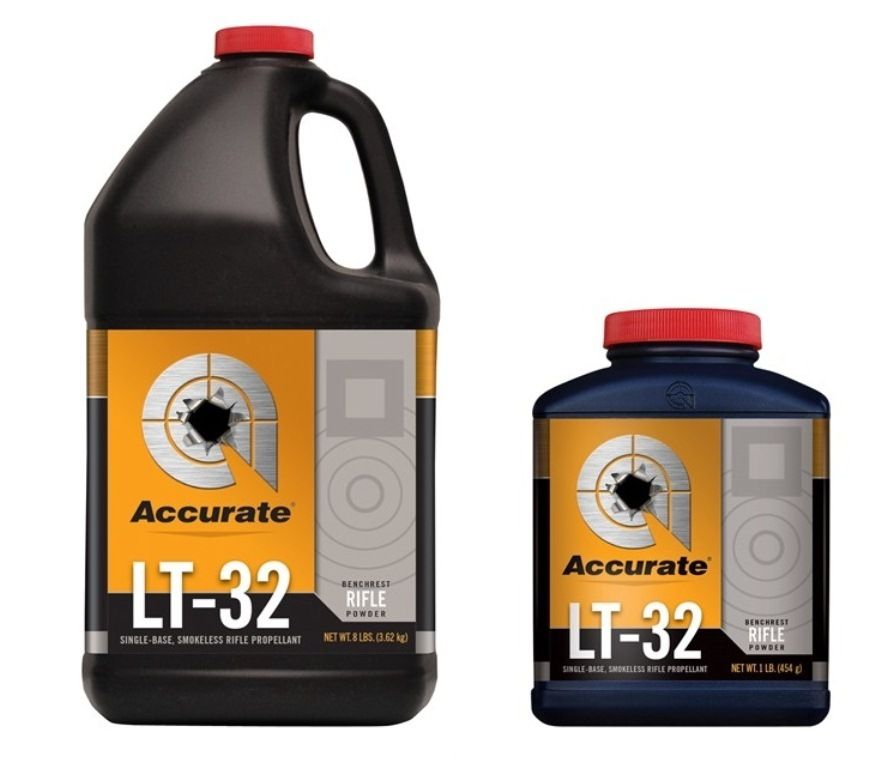 Years ago I learned about lot-to-lot variations with .50 BMGs. When burning 225+ grains per round, surplus powders are an economical Godsend. However their downside is every canister has its own personality. You can’t just pour set amounts across jugs and expect the same results. One must pay attention to batch numbers and age. So let’s get back to the 6 PPC. My Culver measure on 49.5 throws 27.7 grains of #4. The same weight with lot #6 (the 8 lb’er) takes 50.5 clicks. This suggests #6 is less dense than earlier runs. I haven’t chronographed either so the velocity swing or lack thereof is unknown. Yet 27.7 grs of each fills the case to roughly the same spot. That’s good news because benchresters typically load by volume. But what if the burn rates are slightly different? The only way to assess that is by chronographing. Luckily I have enough #4 to load a couple at 27.7 and compare them to #6. If the speeds are materially different I may need to retune. It really depends on how #6 groups at touch and -0.010” off. Give me tight and consistent and the click setting is a moot point; at least with this barrel. So what’s the underlying cause? Without getting too far into powder production it could be the cellulose source. Manufacturers often change the base and that affects density. Most canister powders employ wood fibers or wood pulps which are tough to QC. These cellulose sources are comprised tree bark, solid woods, and even pine needles. Getting the exact mix is nearly impossible when purchasing industrial run-off. Surely the wood industry doesn’t measure what goes into the chipper. Cotton is another good source of cellulose and is probably easier to control. Vihtavuori is one such company that uses cotton throughout. But even then you hear about fluctuating runs of N133. More LT-32 updates to follow. -Lee www.singleactions.com"Chasing perfection five shots at a time" |
|
|
|
Post by Lee Martin on Nov 2, 2015 20:00:14 GMT -5
Cutting Groups – Part III __________________________________ 27.7 grains of lot #6 is still on a node. Lower density doesn’t appear to throw the gun out of tune as shown below. This suggests #4 and #6 have similar burn rates. I shot eight groups Saturday loading the cartridges onsite. They measured 0.125”, 0.165”, 0.171”, 0.198”, 0.209”, 0.223”, 0.258”, and 0.287”. Half were touching the lands, half were 0.010” off. Once again the gun didn’t favor either depth. Load specifics: • 27.7 grs of LT-32, Lot #6 (50.5 Culver measure) • Velocity – TBD • 68 grain FB Bart’s Ultra • Seating – touch and 0.010” off • Brass – Lapua, 5th firing • 0.0015” neck tension – 0.261” bushing • CCI BR-4 primer • Shoulder bump = 0.001” • Loaded neck = 0.2625” on a 0.264” chamber. 0.0015” clearance Select targets: Group #3 - fired at 52.3 degrees, 58.4% humidity, and an average wind of 2.2 mph. Seating was 0.010” off. 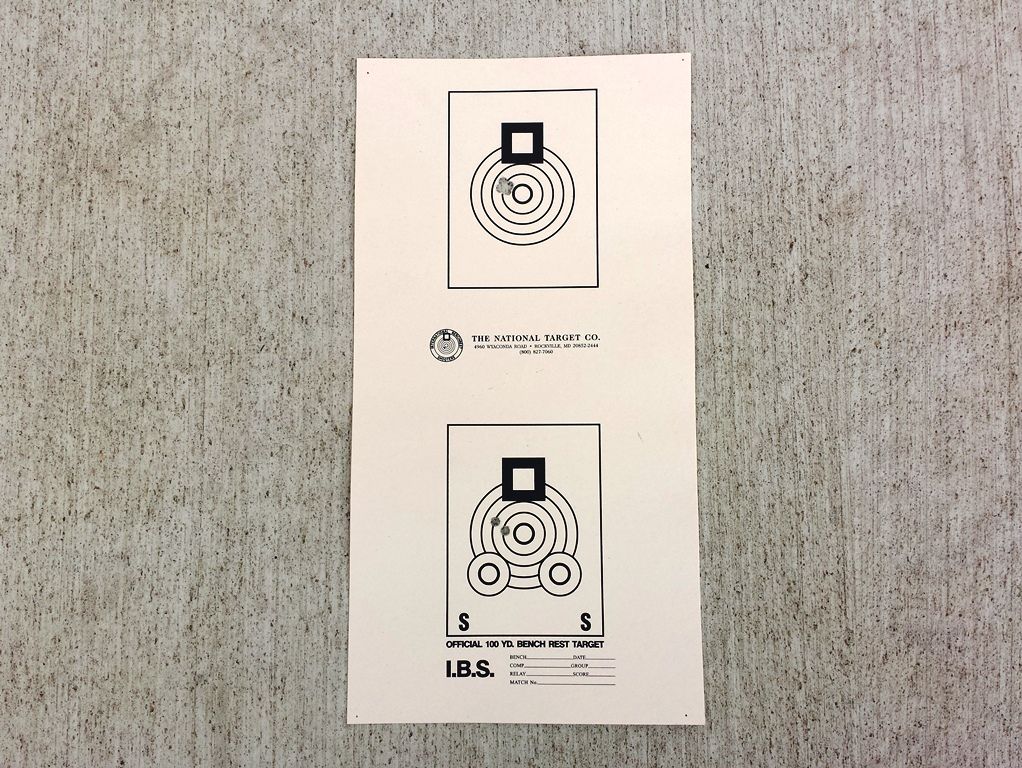 The two widest spans were both 0.414”. Subtracting 0.243” makes the group = 0.171”. 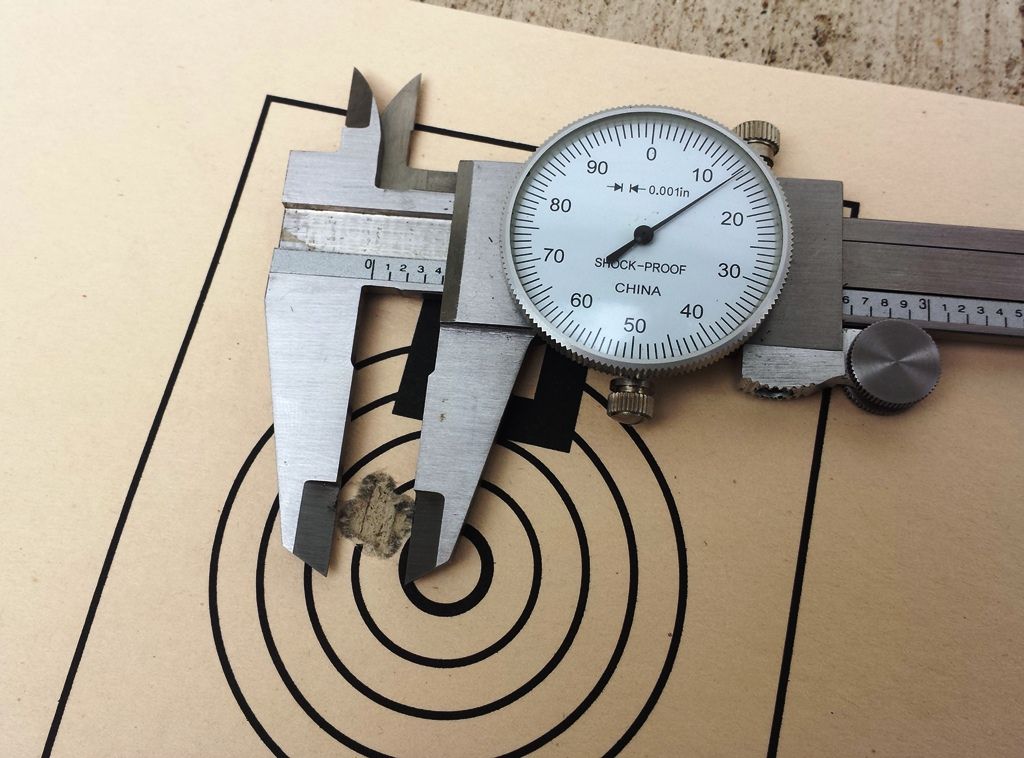 Group #6 - fired at 55.0 degrees, 56.9% humidity, and an average wind of 2.6 mph. Seating was touching the lands. 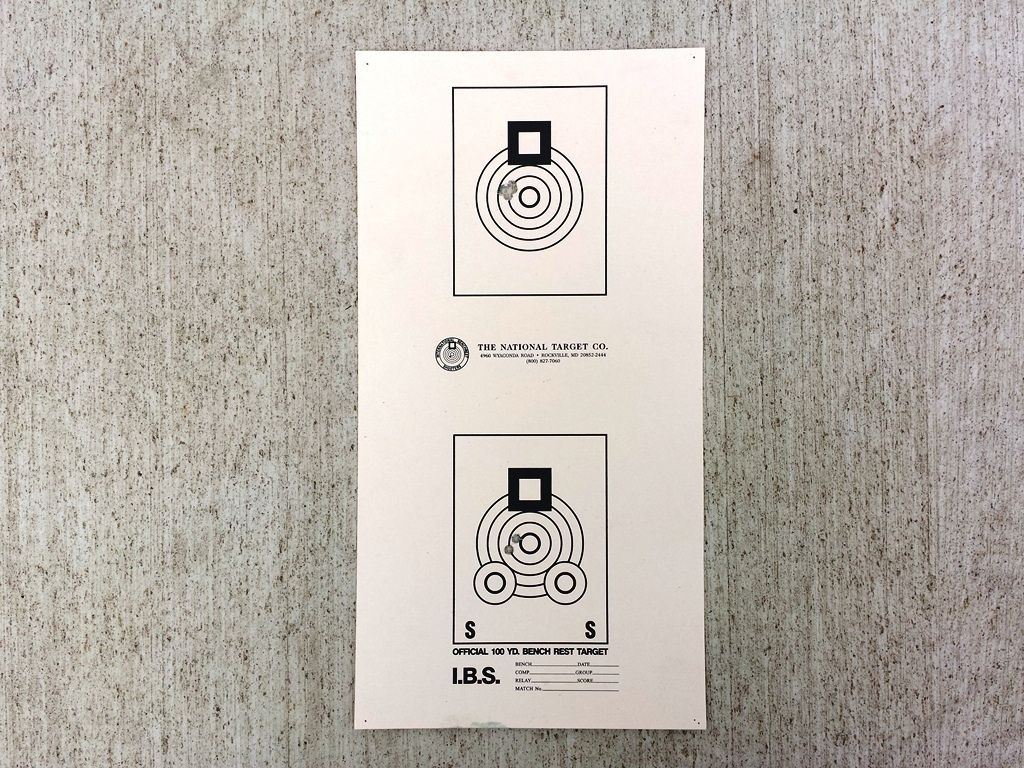 Group size = 0.441” – 0.243” = 0.198”  Group #7 - fired at 57.4 degrees, 56.0% humidity, and an average wind of 1.9 mph. Seating was touching the lands. 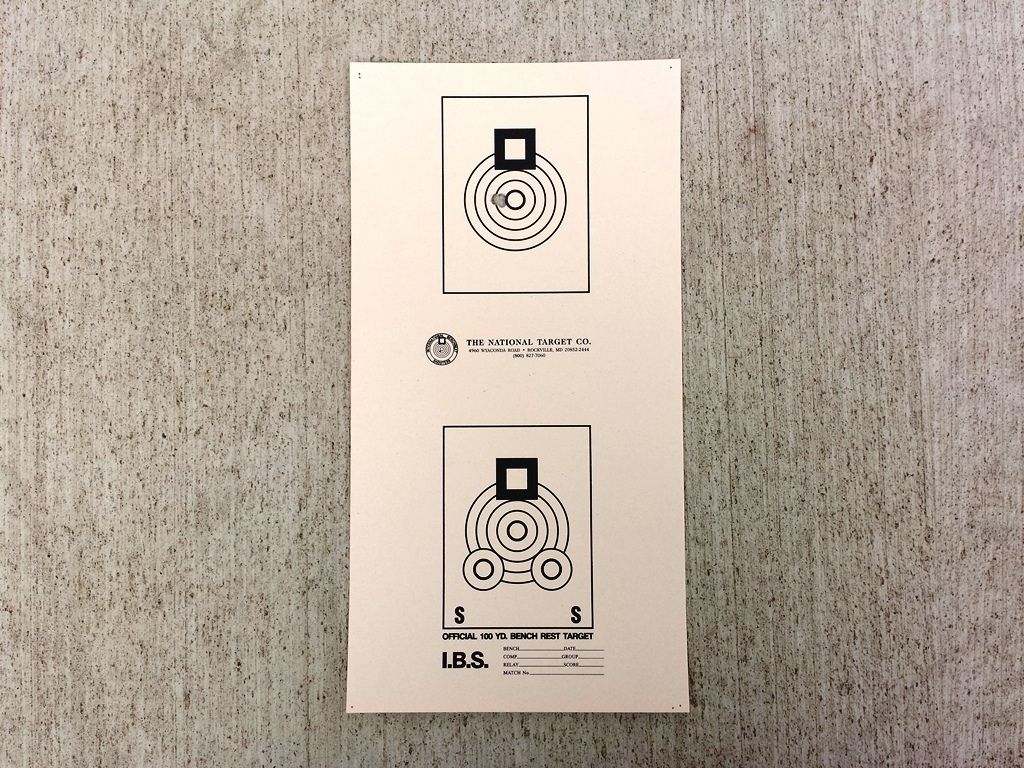 Group size = 0.368” – 0.243” = 0.125”  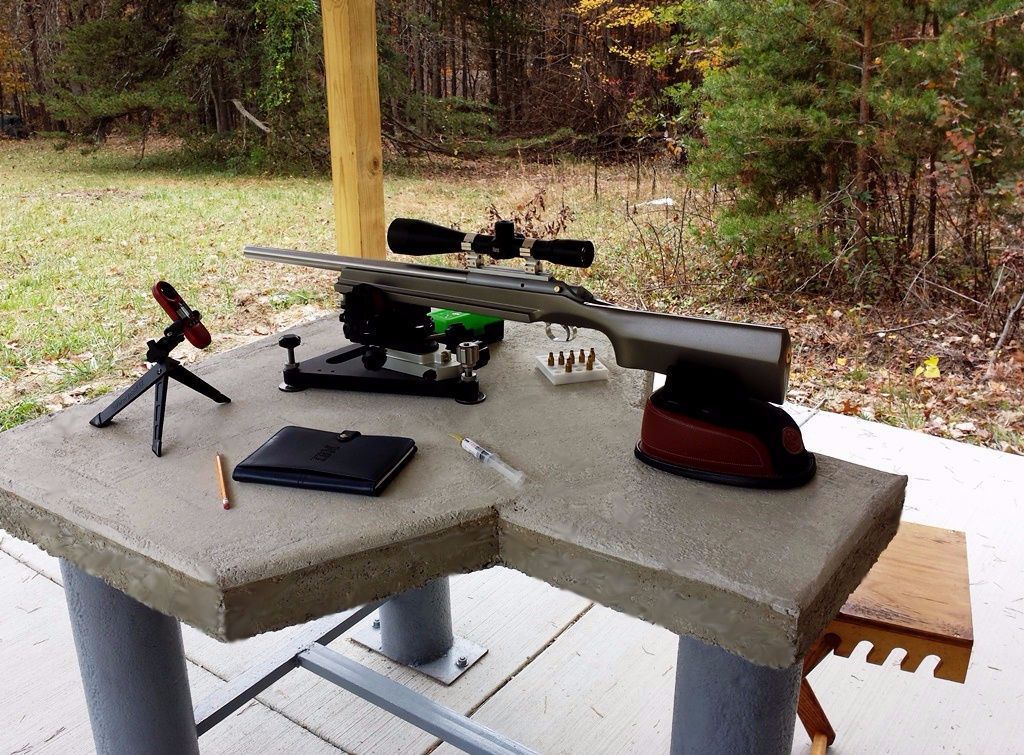 -Lee www.singleactions.com"Chasing perfection five shots at a time" |
|
|
|
Post by Lee Martin on Nov 9, 2015 19:56:02 GMT -5
PPC Brass _______________________ Last night I formed more PPCs but not out of necessity. The fifty I’m shooting have lots of life left in them. Instead this is about barrel timing. Shilen #1 has logged 450 rounds with aggressive cleaning every 10 – 15. It’s humming now but that competitive edge will fade, probably between 800 and 1,200. And when it does I want prepped brass on hand. All will be fire-formed in #1 before installing the next Shilen. Left to right – Lapua .220 Russian, expanded to 6mm, necked turned, fire-formed 6 PPC: 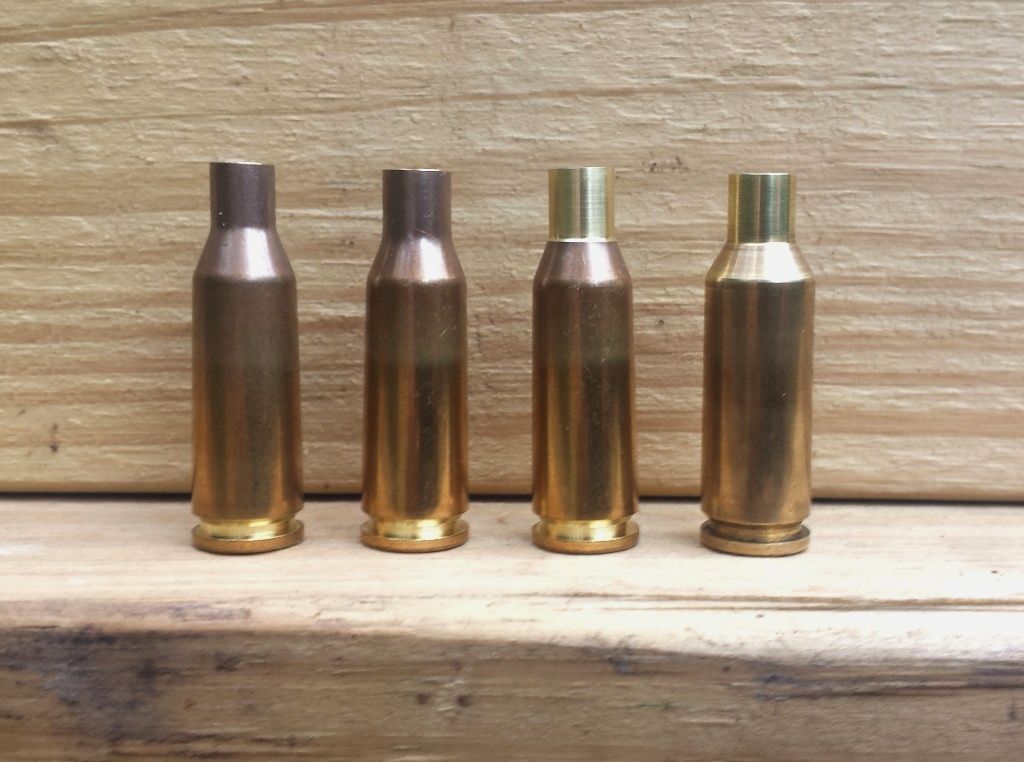 A quick word on setting barrels back. Accuracy loss usually starts in the lead and throat and can be circumvented. By chopping 1.5” – 2.0” off the rear, re-threading, and re-chambering it may perform again. This is often done in benchrest, especially if the tube wins. The shorter length will however affect balance and tracking. Because my rifle rides nice at 21.5” I’ll normally go with a new barrel. -Lee www.singleactions.com"Chasing perfection five shots at a time" |
|
|
|
Post by Lee Martin on Nov 10, 2015 20:17:39 GMT -5
Cutting Groups – Part IV ________________________________ Saturday I was reminded why it pays to load at the range. Attempting to save time I went with 50 pre-assembled PPCs - all done with 27.7 of LT-32 and a 68 gr Ultra touching the lands. Earlier the combination did 1’s and low 2’s on a defined node. Temperatures for that outing averaged 60 degrees with 50% humidity. But November dealt much different conditions. While the 60 degrees held, mist and periods of rain took humidity to 90%. And that wet air moved the gun off tune. Seven out of eight groups had vertical and went mid-to-high 2’s. I did manage a 0.180” but clearly I bounced the node. Lessons learned I guess. Loading onsite would’ve allowed me to dial the barrel by adjusting the charge. That’s why I equate harmonics to a dog chasing its tail. Timing bullet exit is never constant. It changes with the atmosphere, between barrels, and across batches of powder. Trial and error, and ultimately knowing the propellant map is a must. Like anything that combusts, powder is affected by air quality. Here’s a classic example of tuning to conditions. Assume humidity is stable and temp rises. In this scenario guys drop the charge a click or two. That’s because as temperature increases the air becomes less dense. The bullet then experiences lower resistance and gains speed. I’ll illustrate this with real numbers. Let’s say you were on a down node at 27.7 and 3,200 fps at 60 degrees around 9:00 AM. By early afternoon you’ve reached 85 degrees and the bullet goes 3,240 fps. Crazy as it sounds, that extra 40 fps could put exit at a transition point. In other words, the bullet now leaves before reaching the node resulting in vertical. One way to land the tip is to slow to 3,200 fps. Usually a half to one number lower accomplishes this: 60 degrees, 50.5 clicks, 27.7 grs LT-32, 3,200 fps:  85 degrees, 50.5 clicks, 27.7 grs of LT-32, 3,240 fps:  85 degrees, 50.0 clicks, 27.4 grs of LT-32, 3,200 fps:  Humidity is much harder to calibrate. My preferred approach is to shoot one group using the load I think matches the surroundings. The target tells me if the barrel likes it or not. If the group is small and symmetrical, I’ll stick with that load. If it wanders or disperses the barrel is off-tune. This calls for a different charge weight. I may go down a click and see what happens. Returning to the expected pattern means I’m once again hitting the node. Persistent dispersion would make me go the other way or up on charge. Regardless of the outcome, all of this is recorded for future reference. This Friday I'm back at it loading as I go. We’ll see what the gun wants and whether I can keep it in tune. -Lee www.singleactions.com"Chasing perfection five shots at a time" |
|
|
|
Post by Lee Martin on Nov 10, 2015 21:01:21 GMT -5
Correction on the above charts. Time is depicted along the x-axis. -Lee www.singleactions.com "Chasing perfection five shots at a time" |
|
|
|
Post by Lee Martin on Nov 12, 2015 21:47:44 GMT -5
Wind Flags – Part I __________________________________ I’ve talked a lot about wind flags but never posted pictures. So here you go. Below is my set built by Tom Orlando. Four large vane flags and carrying tote: 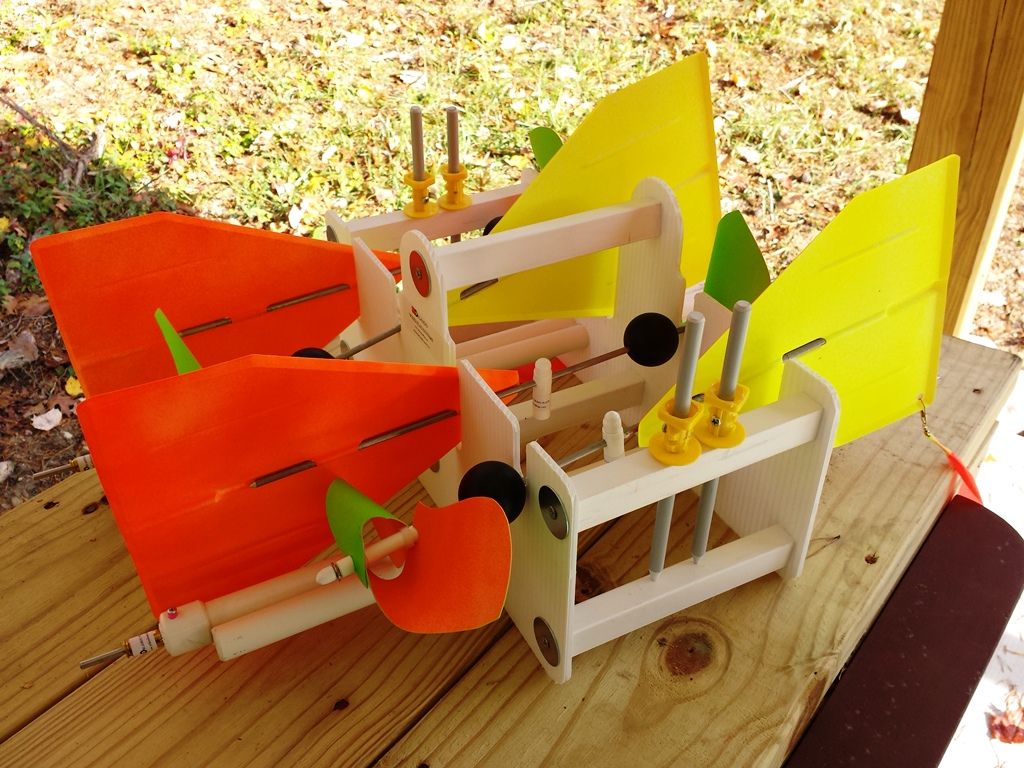 These sit atop a ball bearing system. The white poles attach to ground stakes and contain a telescopic rod. Height is adjustable from 24” to 48”. For BR 100 I set one at 30 and 75 yards.  The vanes are 9.5” x 10.5” which are easily seen at 200 yards. A propeller fastens to the front and a streamer to the tail. Both the panel and propeller are two-toned to help define wind speed and angle.  These things are extremely sensitive. You'll see flickers even when the air appears calm. Moreover they'll show changes not perceivable to naked skin. Here’s a video I made to illustrate the point: In Part II I’ll discuss assessing direction, magnitude, and shifts. Shot management across various conditions will also be covered. -Lee www.singleactions.com"Chasing perfection five shots at a time" |
|
|
|
Post by Lee Martin on Nov 17, 2015 19:31:00 GMT -5
Cutting Groups – Part V _________________________________ Friday saw the same air as my tuning trial. Temps were in the mid 50’s and humidity hovered around 30%. As will be standard practice I loaded on-site in case I needed to alter the charge. But I didn’t have to make any adjustments. 27.7 grs of LT-32 at touch went right back to 1’s and low 2’s. This was in spite of brutal wind. Gusts were 20+ mph and it was very switchy. Without flags there was no way I could’ve landed those groups. Photos of my reloading table. Left is a Harrell’s press and JLC FL sizing die. To the right is my Lyman 55 with an original Culver insert. The background shows a Wilson seater, Sinclair micro-top, and an arbor press.  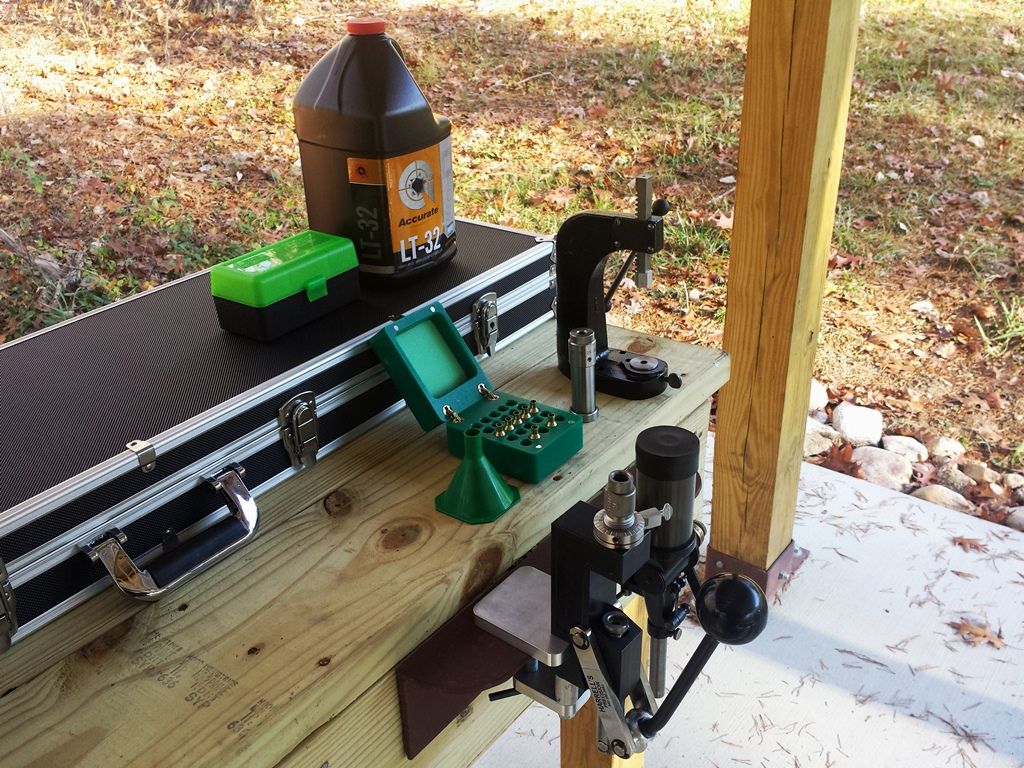 The measure and press simply c-clamp to our bench bracket: 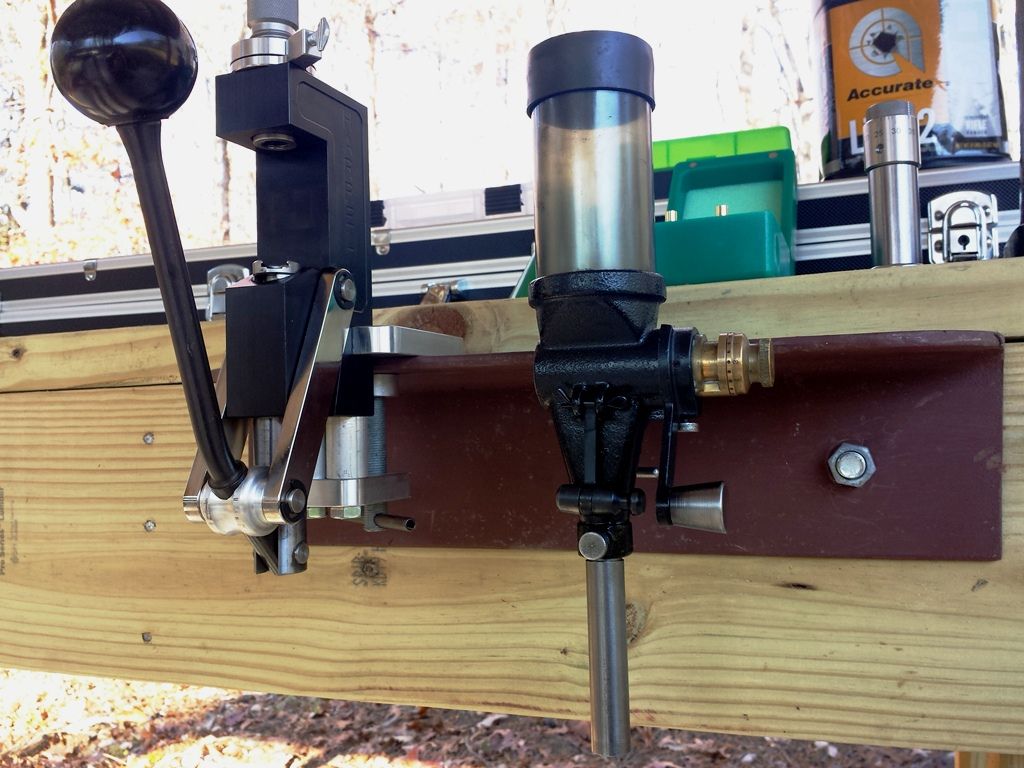 Bullet seating: 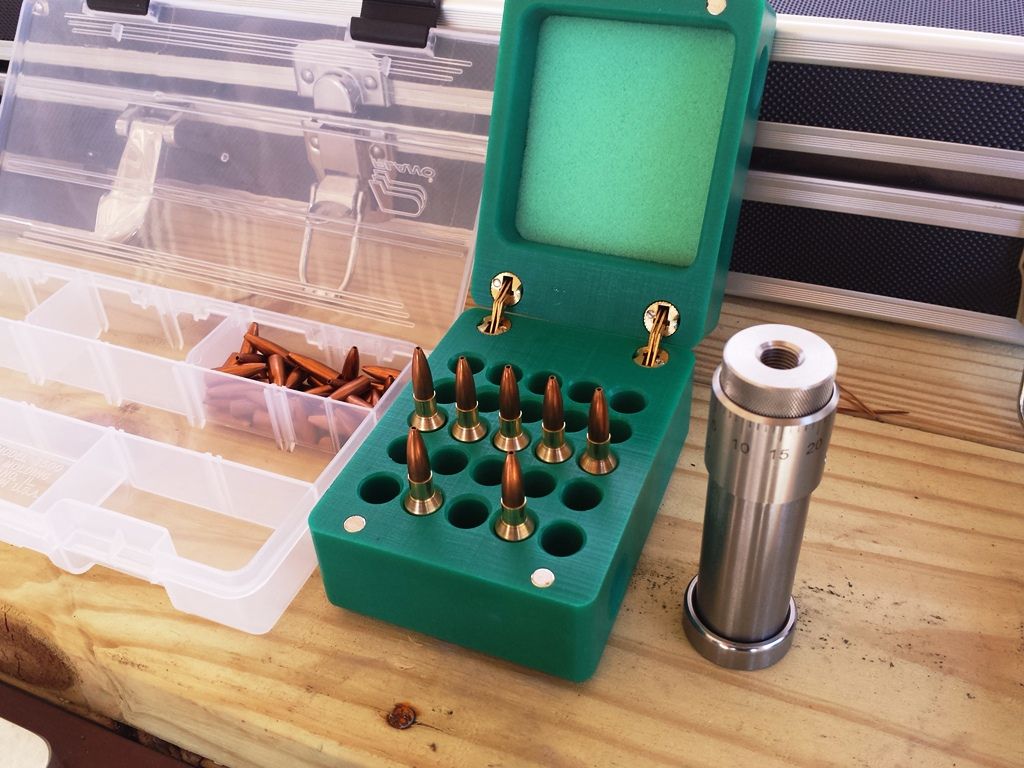 A 0.187” shot during 6 – 7 major shifts, an average speed of 7.8 mph, and a peak gust of 21. The third shot dropped to 6 o’clock because the wind came in on me. I just timed it wrong, otherwise this could’ve been another screamer. 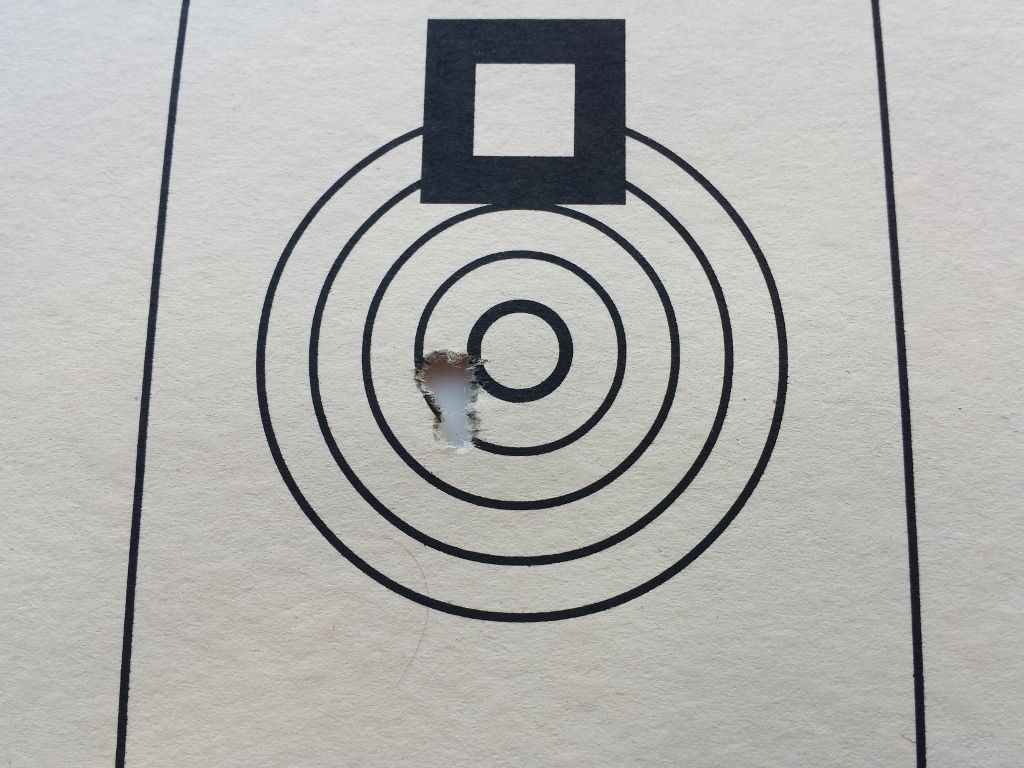 I’m too green to label this Shilen a hummer but the barrel flat shoots. -Lee www.singleactions.com"Chasing perfection five shots at a time" |
|
cmillard
.375 Atomic
   MOLON LABE
MOLON LABE
Posts: 1,989
|
Post by cmillard on Nov 17, 2015 23:15:22 GMT -5
lee, curious if the JLC die is the same JLC that I know and who does my rifle chambering--Jim Carstensen of JLC precision? If so, he is a hell of a good guy and does awesome work and a fairly short drive from me/
|
|
|
|
Post by Lee Martin on Nov 19, 2015 22:14:04 GMT -5
lee, curious if the JLC die is the same JLC that I know and who does my rifle chambering--Jim Carstensen of JLC precision? If so, he is a hell of a good guy and does awesome work and a fairly short drive from me/ Yep, the die was made by Carstensen. His basic PPC FL sizer is a perfect match for my JGS 1045 chamber. No doubt Jim is one of the top precision rifle smiths going right now. You're in good hands. -Lee www.singleactions.com"Chasing perfection five shots at a time" |
|
|
|
Post by Lee Martin on Nov 19, 2015 22:21:07 GMT -5
A behind the scenes look at how Kelbly benchrest rifles are made. It's short but does show some of the critical steps: -Lee www.singleactions.com"Chasing perfection five shots at a time" |
|
cmillard
.375 Atomic
   MOLON LABE
MOLON LABE
Posts: 1,989
|
Post by cmillard on Nov 19, 2015 23:04:07 GMT -5
I might see if he can make me a .408 cheytac die if I ever get my barrel/receiver over to him to get it chambered. glad to see your rifle is punching some nice tight groups!
|
|
|
|
Post by squawberryman on Nov 21, 2015 7:55:03 GMT -5
On Nov 9 you mentioned aggressive cleaning sir. Please define.
|
|
|
|
Post by Lee Martin on Nov 23, 2015 18:45:15 GMT -5
On Nov 9 you mentioned aggressive cleaning sir. Please define. Gregg - I plan on detailing the many methods used in benchrest. That’ll include pros and limitations of each along with the endless debate over bronze vs. nylon brushes, standalone wet patching, crown saving tips, bore guides, action cleaning tools, rods, solvents, pastes, and bore scopes. But to briefly answer your question here’s what I do. Every two groups, or 13 – 16 shots because of foulers and sighters, I clean by: • One wet patch of Kroil penetrating oil down the bore. This really loosens the carbon layer • Three consecutive patches of Butch’s through the barrel. Then I walk away for 5 minutes and let it attack the copper • Using a coated Dewey rod and a bronze brush soaked in Butch’s I do one cycle back and forth for each shot. That works-in while I reload. • Three more patches of Butch’s are sent through to remove all remaining carbon and copper. • Lastly I dry patch until they come out perfectly white. Typically it only takes two to three to get there. Before the next record group is fired I shoot two sighters to reheat the barrel. This also primes the bore with some copper. 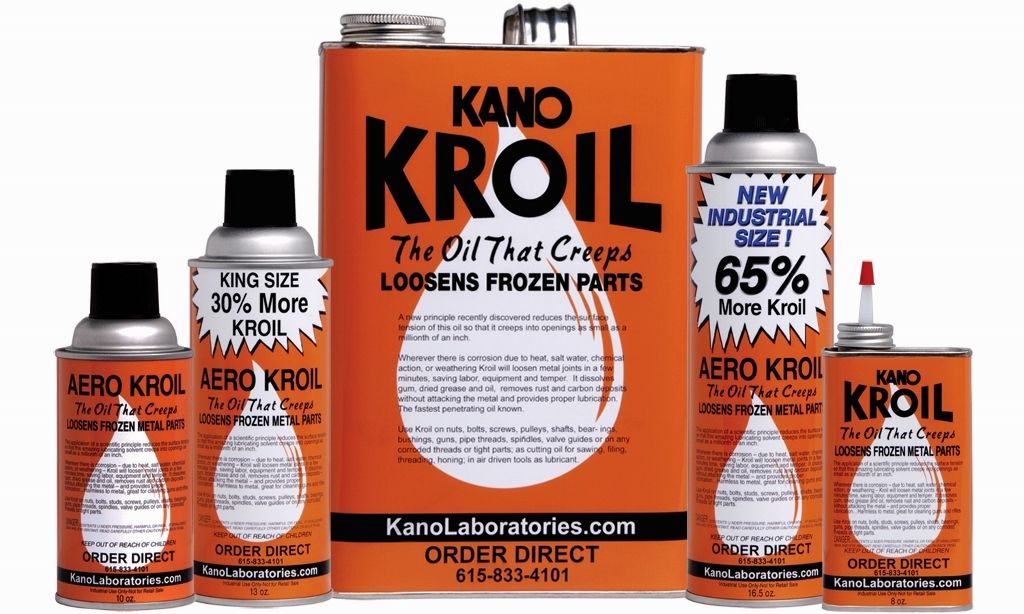 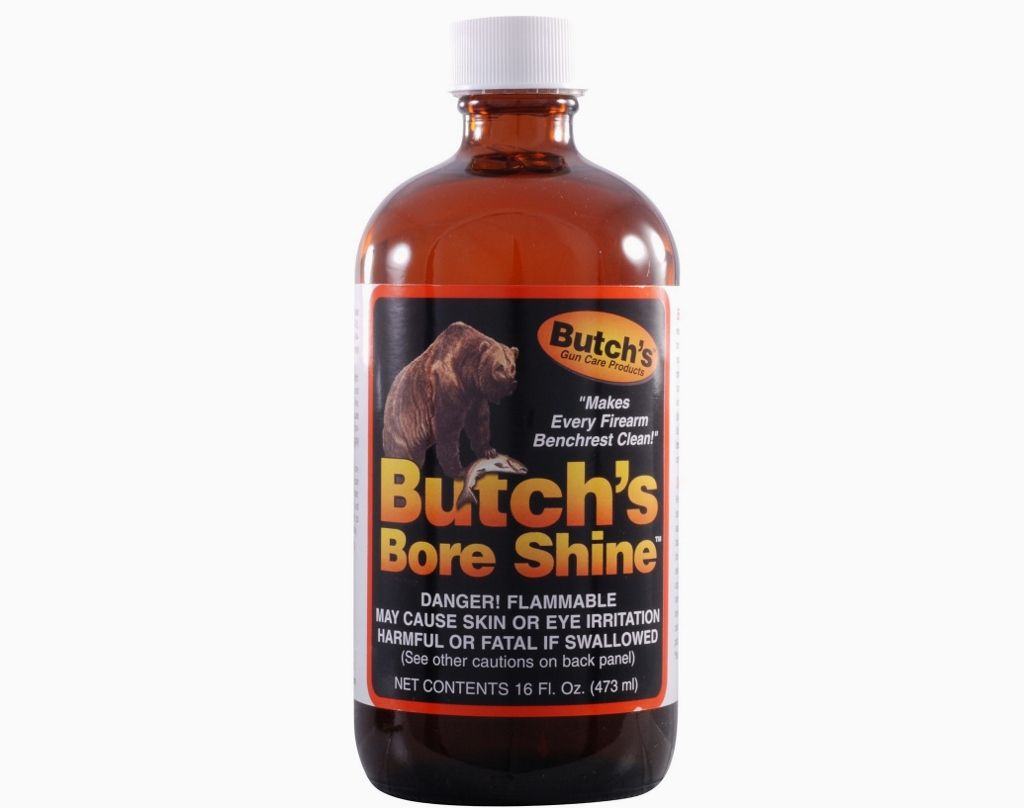 -Lee www.singleactions.com"Chasing perfection five shots at a time" |
|
|
|
Post by Lee Martin on Nov 24, 2015 18:41:59 GMT -5
Cleaning Carbon _________________________________ After posting last night I spoke with a friend and long-time benchrest shooter from the west coast. Somehow we got on the subject of cleaning and carbon build-up in the throat. According to Boyd, LT-32 is more prone to carbon fouling than powders like N133. Of course all propellants deposit residue and he stressed the need to get ahead of it. My regiment of penetrating oil and ammonia solvents just isn’t enough to cut through. He recommended hitting it with paste compounds like JB or Iosso using a nylon brush. Every hundred rounds or so appears to be a good cadence.  He suggested Iosso so I ordered a tube along with nylon brushes. The key is to gently stroke 8 to 10 inches past the neck followed by thorough cleaning. Iosso is a mild abrasive paste and should be used sparingly. Otherwise you’re lapping the barrel and in essence polishing the bore. That’s why nylon is preferred to metallic bristles. Another way to apply it is on a cotton patch wrapped around a bronze brush.  I’m shooting the PPC tomorrow but before the next outing it’ll get treated with Iosso. -Lee www.singleactions.com"Chasing perfection five shots at a time" |
|